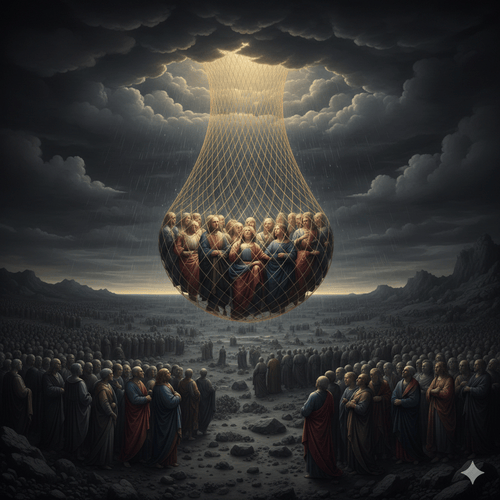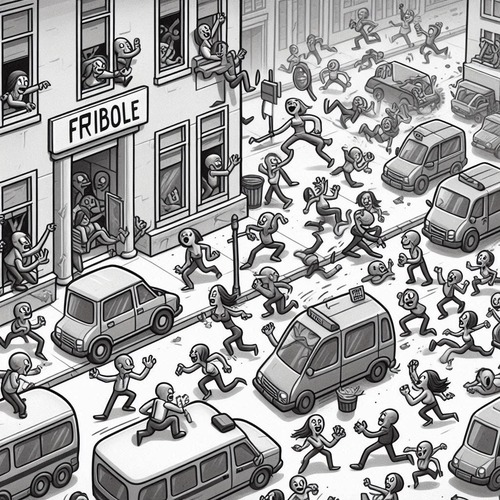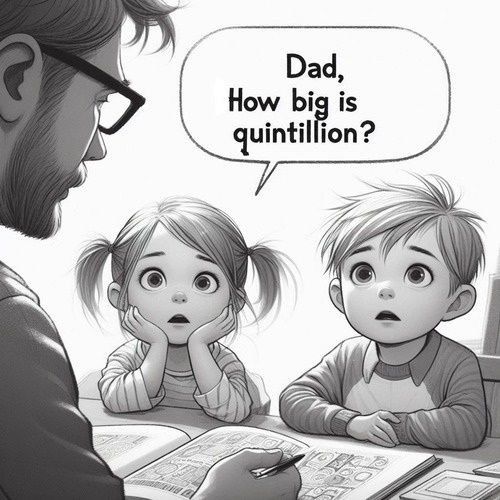The Argument From Beauty: Five Reasons To Believe It Points To Design
In the depths of our oceans, hidden from human eyes for millennia, swim creatures of such extraordinary beauty that they challenge our understanding of how such perfection could arise by chance. The ethereal dance of the translucent moon jellyfish, the electric brilliance of the mandarin fish, and the architectural magnificence of coral gardens remained largely unknown to humanity until underwater photography revealed their splendor. That such beauty existed, unseen by human eyes for most of history, raises profound questions: Why does nature create such magnificent designs in places where, until recently, no human could witness them?
This mystery deepens when we consider the mathematical precision and artistic brilliance found throughout the natural world. From the spiral of a nautilus shell to the hexagonal perfection of snowflakes, from the iridescent wings of butterflies to the ordered chaos of a spinning galaxy, we find ourselves surrounded by beauty that follows precise mathematical patterns.
OUR FIVE REASONS TO BELIEVE BEAUTY POINTS TO DESIGN
Here are five key patterns of beauty that appear too precise, too complex, and too meaningful to be explained by random processes alone. Collectively these make a compelling case for intelligent design:
Join us as we explore each of these reasons by turn:
1. The Mathematical Precision In Nature’s Aesthetics
The mathematical precision found in nature extends beyond visible patterns—they’re the very fabric of reality. The orbital resonances of planets follow mathematical ratios that create stability in our solar system. Crystal formations grow according to precise geometric rules that create stunning symmetrical structures. Even the seemingly chaotic patterns of lightning bolts and river networks follow fractal mathematics that can be described with perfect equations.
The fine-tuning of physical constants presents another layer of mathematical beauty. The fundamental forces of nature—gravity, electromagnetism, and the strong and weak nuclear forces—are balanced with such precision that even slight variations would make life impossible. This “cosmic coincidence” suggests a universe fine-tuned not just for existence, but for beauty.
2. Engineering of Elegance: The Intricate Complexity of Systems that Create Beauty
The principle of minimal surfaces, a mathematical wonder, appears throughout nature in soap bubbles, cell membranes, and even the delicate structure of butterfly wings. These structures automatically form the most efficient shape possible while using the least amount of material—a perfection of engineering that emerges spontaneously. We see this same principle in the hexagonal structure of the honeycomb, which provides maximum storage space with minimal building material.
The genetic choreography behind nature’s most stunning displays reveals a level of sophistication that stretches the boundaries of probability. Consider the peacock’s feather—each one contains microscopic layers of precisely arranged melanin rods and keratin crystals that must be spaced exactly 140 nanometres apart to create its shimmering iridescence. The genetic code doesn’t just specify one aspect of this design, but coordinates multiple elements simultaneously: the spacing of these nanostructures, their precise angular relationships, the timing of melanin deposit, and the development of specialised cells that grow these crystals.
In butterfly wings, we find an even more intricate dance of genes directing the formation of microscopic scales, each containing sophisticated photonic crystals that split light into brilliant colors. These are not simple pigments, but living optical prisms of such precision that scientists are still struggling to replicate them in laboratories. The sheer complexity of these genetic instructions, which must be perfectly coordinated to produce these visual masterpieces, suggests an architect rather than accident.
3. The Universal Human Appreciation of Beauty
One of the most fascinating aspects of natural beauty is our universal ability to recognise and appreciate it. Across cultures and throughout history, we’ve demonstrated consistent appreciation for certain natural forms and patterns. The symmetry of a butterfly’s wings, the spiral of a galaxy, and the branching patterns of trees evoke similar responses of wonder and admiration across cultural boundaries.
This shared appreciation suggests something profound about both the nature of beauty and human consciousness. Why should random evolutionary processes create beings capable of recognising and being moved by mathematical patterns and proportions that appear to serve no direct survival purpose?
4. The Existence of Beauty that Serves No Clear Survival Advantage
Perhaps the most compelling argument against purely materialistic explanations comes from instances where beauty far exceeds any survival requirement. The peacock’s tail is a profound example—its intricate patterns and iridescent colors go far beyond what’s necessary for mere species recognition or mate attraction. The male peacock’s display represents an exponential leap beyond functional necessity into the realm of artistic excellence.
Similarly, consider the elaborate patterns on butterfly wings. While some coloration serves protective purposes, the intricate symmetry and artistic arrangement of these patterns suggest something more than mere camouflage. The question gets even more intriguing when we consider deep-sea creatures such as the glass squid or the fluorescent coral that create spectacular light displays in the darkness of the ocean depths.
5. The Multiple Independent Systems that Work Together Harmoniously to Create Beauty
Perhaps even more compelling is the harmonious convergence of multiple independent natural systems to create beauty. A rainbow isn’t merely a happy accident of water and light, but requires an exquisite coordination of several distinct phenomena: the precise refractive index of water, the specific wavelengths of sunlight, the optical properties of air, and the geometric positioning of water droplets all must align perfectly.
Similarly, the aurora borealis emerges from an intricate interplay between solar wind particles, Earth’s magnetic field, atmospheric gases, and the laws of quantum mechanics governing electron transitions. These phenomena require multiple independent systems—each governed by their own physical laws—to work together in precise harmony to create displays of breathtaking beauty. The consistent way these separate systems interlock to produce aesthetic excellence strongly suggests intentional design rather than random processes happening to produce beauty as a by-product. It’s as if the universe itself has been fine-tuned not just for existence, but for beauty.
CONCLUSION
The argument from beauty presents a powerful challenge to purely materialistic explanations of our universe. The existence of beauty that exceeds functional necessity, the mathematical precision of natural patterns, and humanity’s universal ability to recognise and appreciate these patterns all point to something beyond random chance. Whether we look to the recently discovered wonders of the deep ocean or the age-old patterns of the night sky, we find evidence of what appears to be purposeful, artistic design.
As we continue to discover new wonders through advancing technology—from the intricate dance of cellular machinery to the stunning complexity of deep-space phenomena—the question becomes more pressing: Are we merely witnesses to the random results of mindless processes, or are we discovering the signatures of a grand design, written in the language of beauty across all creation?
The Argument from Beauty—Related FAQs
How does phyllotaxis—the mathematical precision in plant patterns—point to a Designer? The incredible precision of the 137.5-degree angle in plant growth patterns goes beyond mere chance or gradual development. This angle, which appears consistently across vastly different plant species and ensures optimal resource utilisation, exhibits a level of mathematical sophistication that suggests pre-planned design rather than random mutation. Just as we recognise that precisely calculated angles in architecture must come from an intelligent architect, these consistent mathematical patterns in nature point to a Master Designer who embedded efficient, mathematical principles into creation itself.
- Can’t the principle of minimal surfaces be explained by physics alone, without invoking a Designer? While physics certainly describes how minimal surfaces form, it doesn’t explain why the universe operates according to such elegant mathematical principles in the first place. The fact that these surfaces consistently create structures of both maximum efficiency and remarkable beauty – from soap bubbles to cell membranes – suggests an underlying design that unifies beauty with functionality. Moreover, the existence of universal mathematical principles that consistently produce optimal solutions points to a rational, intelligent source behind the laws of physics themselves.
- How do wave patterns in nature support the argument for a Designer? The appearance of similar wave patterns across radically different contexts—from sand dunes to animal stripes to cloud formations—suggests a unifying intelligence behind these designs. The fact that these patterns can be described by precise mathematical equations indicates they stem from an ordered, rational source rather than random processes. That these patterns often serve multiple purposes simultaneously (like zebra stripes providing both camouflage and temperature regulation) while maintaining aesthetic beauty suggests intentional design rather than accidental development.
Isn’t the golden ratio just one of many mathematical patterns that could have emerged naturally? The ubiquity and consistency of the golden ratio across vastly different scales—from galactic spirals to seashells to human DNA—suggests more than coincidental emergence. The ratio’s simultaneous optimisation of both functional efficiency and aesthetic beauty across numerous contexts implies intentional design rather than random development. Furthermore, the human ability to recognise and appreciate this ratio suggests our minds were designed to recognise the signature of our Creator in nature.
- How do we explain imperfect patterns or “ugly” elements in nature if everything is designed? From a creationist perspective, we recognise that while the original creation was perfect, it has been affected by the Fall and subsequent degradation. Nevertheless, even in our current world, the overwhelming presence of mathematical beauty and order points to the original perfect design. The persistence of such precise mathematical patterns, despite entropy and degradation, actually strengthens the design argument, as it shows the robustness of the original created order.
- How do you respond to the argument that we have simply evolved to recognise these patterns because they were advantageous? The human ability to recognise and appreciate mathematical beauty far exceeds any survival advantage—our appreciation of galaxy spirals or the golden ratio in art offers no evolutionary benefit. Our capacity to understand abstract mathematical concepts and recognise their beauty in nature suggests we were designed by the same intelligence that designed these patterns. The fact that we can discover and appreciate these mathematical principles suggests we were meant to recognise the signature of our Creator.
Given these mathematical patterns, why can’t we just say the universe itself is the designer? Mathematical patterns and principles require a rational, intelligent source—they cannot arise from mindless matter alone. The existence of complex, interrelated mathematical patterns that simultaneously achieve both functional efficiency and aesthetic beauty points to a personal, intelligent Designer rather than an impersonal universe. Moreover, the fact that these patterns often exist in places unseen by humans until recently (like deep-sea creatures) suggests they were designed for purposes beyond human appreciation, pointing to a transcendent Creator.
The Argument from Beauty—Our Related Posts
- Patterns In Chaos: How Fractals Scream Intelligent Design
- The Mandelbrot Set: Surprising Evidence for Intelligent Design
Editor's Pick

Why Do People Hate the Doctrine of Election?
…WHEN THEY REALLY SHOULDN’T Few Bible doctrines provoke stronger reactions than election. The idea that God chose some for salvation [...]

The Doctrine of Providence: Does God Really Govern All Things?
You’re sitting in the doctor’s office when the diagnosis lands like a thunderclap. Your mind races: Why this? Why now? [...]

No Decay, No Defeat: What It Means That Christ’s Body Saw No Corruption
On the Day of Pentecost, Peter stood before thousands and made a startling claim: David's body decayed in the tomb, [...]
SUPPORT US:
Feel the Holy Spirit's gentle nudge to partner with us?
Donate Online:
Account Name: TRUTHS TO DIE FOR FOUNDATION
Account Number: 10243565459
Bank IFSC: IDFB0043391
Bank Name: IDFC FIRST BANK






